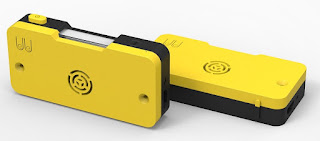©Mark
Ollig
After
talking computers with the smiling, youthful-looking computer salesperson (I’ll
call Robert for this column), he said the following to me: “You talk a lot like
my dad did when I was growing up. Many years ago, he worked in the computer IT
department at his office.”
I
smiled back; however, for a split-second, I felt unsure of how to reply to his
comment.
Of
course, Robert meant it as a compliment; however, it was the “many years ago”
which distracted me.
I
then realized my sprinkling of old-school computing jargon into the
conversation reminded Robert of what his father, probably a fellow baby-boomer,
had spoken to him in his youth.
But,
I digress.
You
may recall I wrote a column about my experience switching from Microsoft
Windows to the Apple OS (operating system) after buying a used MacBook laptop
five years ago.
Guess
what, folks? I’m moving back to Windows.
Years
before using the Apple OS, I was a dedicated (and occasionally very frustrated)
Microsoft Windows user.
Microsoft
successfully tempted me to move back with their Windows 10 OS, which is a
combination of features taken from Windows 7 and 8.
This
edition of Windows reportedly won’t freeze-up or crash like its previous
versions, which gives me confidence it’s now a stable operating system.
After
finishing my computer shopping at this popular electronics computer store, I
brought my items up to the checkout counter where Robert rang them up, and
processed my electronic payment.
He
then cheerfully placed my new HP notebook computer, USB Bluetooth adapter,
wireless mouse, external speakers, and Kaspersky Internet Security
authorization code card into plastic bags.
After
thanking Robert, I left the store with my items and walked to the parking lot.
Opening
my car’s rear door, I carefully positioned the bags on the backseat.
As
I got behind the wheel, a worrying thought came over me. “What do I really know
about Windows 10?”
I
knew it was released in 2015 under the code name Threshold, and Microsoft had
reinstalled the popular start menu on the task bar; other than that, not too
much.
So,
I decided to go old-school and get some books on Windows 10.
Not
eBooks, or Kindle; I mean real, honest-to-goodness parchment paper books I
could sink myself into – just like back in the old days.
Driving
to a nearby, well-known book store, I found myself fortunate to park
surprisingly close to its main entrance – I took this as a sign.
Confidently,
I strolled into the store, and spied where their row of technical book shelves
were located.
If
you’ve ever watched someone standing and staring bewilderingly at hundreds of
books on a shelf – you know how I looked.
While
gazing at the technically pleasing artwork on the book covers, I suddenly heard
a voice from behind me, “Can I help you find something?”
“No,
I am just zeroing in on what I need here, thanks for asking,” I confidently
replied.
The
store assistant gave me a wry smile, and headed down to the next row of folks
browsing through books.
In
what could be described as a case of divine intervention, one book title with
five large letters on its cover immediately caught my eye.
“Windows
10 Anniversary Update BIBLE.” Of course, I had to have this 792-page book.
I
also purchased “Windows 10 Step by Step” (607 pages) ,and “Windows 10 Tips and
Tricks” (465 pages).
I
now have plenty of old-school reading material to keep me busy.
After
leaving the bookstore (it was a beautiful, sunshiny day), I sat in my car,
opened the sunroof, and found myself reading a few pages from each book.
After
45 minutes, I knew I couldn’t sit in the parking lot all day, so like a kid
excitedly waiting to open a Christmas present, I drove home with my new books
and unopened notebook computer.
At
home, I carefully placed the computer on my office table, plugged it into the
surge-protected AC outlet, and turned the power on.
It
only took a few minutes to load Windows 10 for the first time, and for me to
answer all the initial questions; everything worked fine.
I
liked the clean, new look of the Windows 10 desktop user interface.
Next,
I connected the notebook to the internet, and was quickly online using
Microsoft Edge.
Yours
truly also uses the Google Chrome and Mozilla Firefox web browsers.
The
Microsoft Office website is where I downloaded my new Office 365 personal
subscription.
The
Office 365 code key I needed to enter in order to unlock this application was a
lengthy 25 characters long.
I
learned my one-user one- year subscription also included 1 TB of OneDrive cloud
for data storage, upgrades, updates, and the ability to use Office 365 on my
mobile devices.
My
program applications are working well with Windows 10; in fact, this column was
written using my new Office 365 Word program on my new HP notebook.
The
new computer includes the cloud-based, digital assistant, Cortana, which is
similar to the iPhone’s Siri, Google Assistant, and Amazon’s Alexa.
Cortana
quickly recognized my voice commands; becoming familiarized with it after I
read through a few practice sentences.
Opening
Microsoft Word happened quickly after I verbally asked Cortana to “open Word.”
With
an always-on internet connection, I’ve asked Cortana for current weather
conditions, to play my favorite music using my Microsoft Groove Music
subscription, open websites, and more.
My
greatest relief about the Windows 10 operating system: It has yet to crash.
Thanks
to everyone following me on Twitter at @bitsandbytes.





